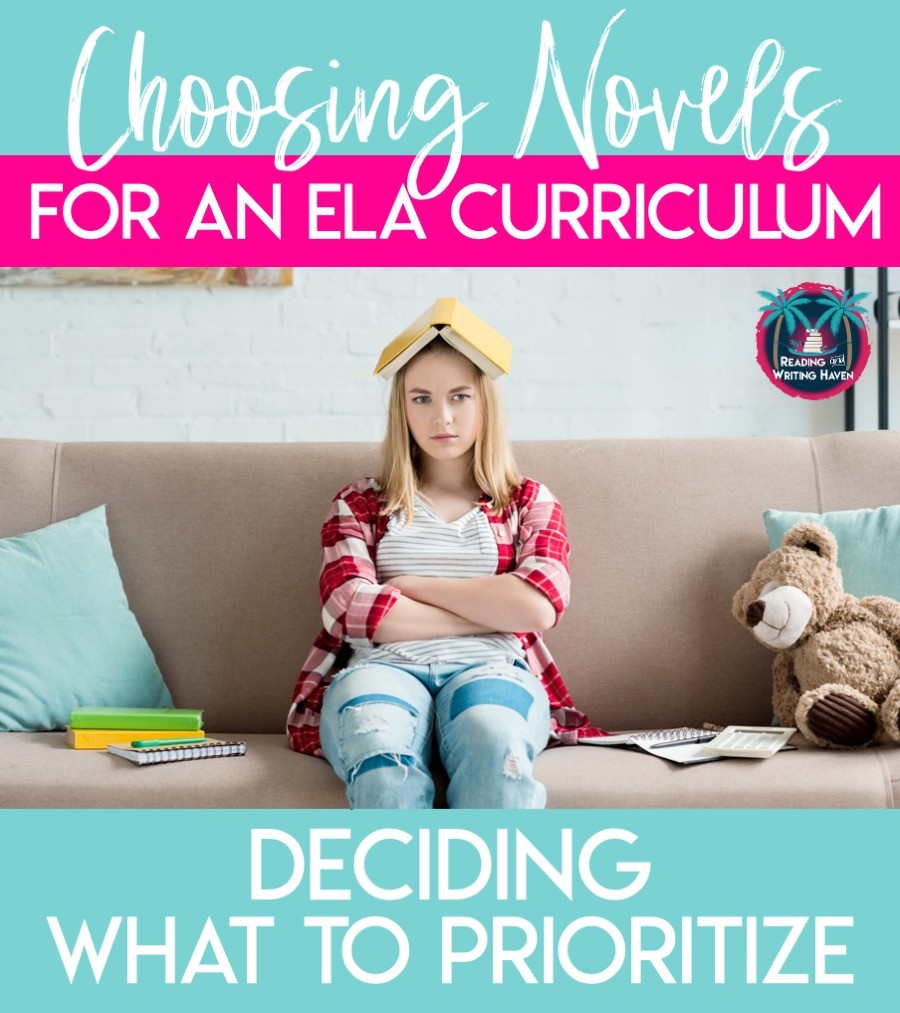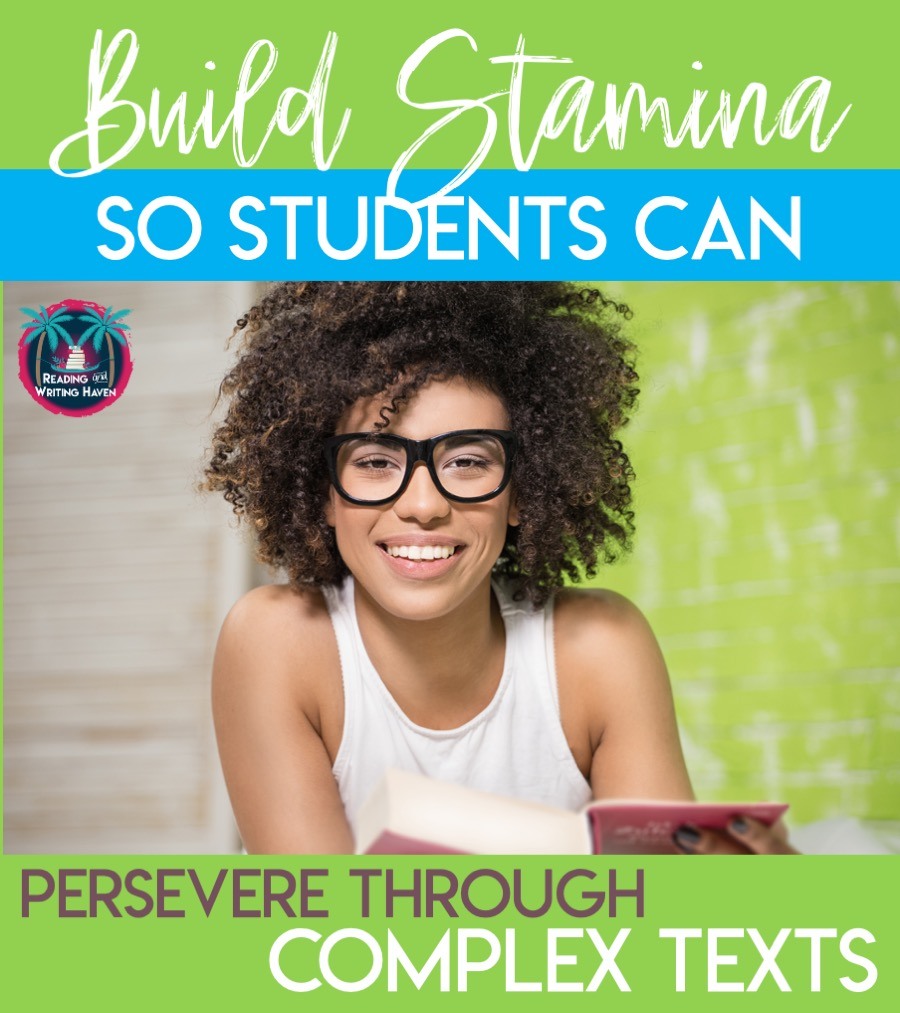How to Select the Best Novels for Your ELA Curriculum
It’s frustrating when we have what feels like hundreds of standards to teach and little time to do it in. How do you fit it all in? Everyone wants to know. Part of the way we choose novels and think about teaching literature can help us unpack this problem.
Junior year in high school, it was The Jungle. In college, it was Moby Dick and, randomly, book 5 of Harry Potter when I hadn’t read books 1-4.
As a student, I vividly remember being assigned books I had zero interest in reading. I was studious and wanted to please my teachers. Some books, however, I just couldn’t force myself to read. And, as a reader, I remember the bitter feeling inside when I felt the conflicting tension of the choice: to read and hate every second or to not read and feel the shame of being a “bad student.”
As a teacher, I’ve done similar. I’ve asked students to read books that don’t resonate or that may be too difficult or too easy…because they’re classics…because they are good for students.
This post is an honest reflection. I’ve thought a lot about how as teachers, we often teach in one of two ways:
- How We Were Taught: When we choose novels, we sometimes tend to select ones that we studied and enjoyed in school.
- How We Learn: We choose literature that is dear to our hearts – that has taught us something about life.
Deciding What to Prioritize
With each of these approaches, the books we select are often part of the Western canon. Yet, our students have different backgrounds and cultures, which creates a disconnect that affects reading identities and attitudes.
While I don’t think drawing upon what we know and love is bad, my awareness of students’ needs and philosophy for choosing and teaching literature is changing.
What is the best way to choose novels for our curriculum?
Educators as a whole are slowly shifting the focus of these discussions. Some conversations about choosing literature are rooted in texts first. What are some of the must-read books for students? Others begin with what we want students to learn and then move into the conversation about texts that are fitting both for those learning targets and providing meaningful choice for students.
When it comes to teaching books, there are three common points of contention.
- Can we effectively teach language arts without teaching an analysis of an entire book?
- Does prioritizing standards over novels take away from students’ appreciation for reading or from the focus on students themselves?
- How can we solve the ever-frustrating issue of which grade levels get “dibs” on teaching certain texts?
My opinion? We can answer all of these questions through this lens: It’s not about the books. It’s about the students.
Why Not Choose Novels First?
If we ask students what they are learning, and the only thing they can tell us is Shakespeare, Wonder, or Animal Farm, it might be an indication that we need to revisit our focus. While we may have every intention of teaching standards with a novel, students may not see it. To them, it may feel like they are “learning Lord of the Flies.”
When we begin the conversation with a focus of choosing novels, finding standards and embedding choice become secondary.
What if — instead of talking about novel possibilities first — we put anchor charts around the room during our department meetings? Each anchor chart could have a learning target we want students to hone. Then, we could talk about which texts might best fit students’ interests and needs with these learning targets.
We may discover that sometimes we can meet students’ needs just as well – and in a more engaging way that saves us time – through shorter texts that allow them to transfer skill and thinking patterns to literature circles, book clubs, or independent reading.
What about the Literature Experience?
Students can still love and appreciate literature — even if they don’t read an entire book as a class. In fact, it can give them more voice and choice because when the focus is on the skills and strategies students are learning instead of the text, students can have more flexibility in what they are reading.
That’s one of the aspects I love most about reading workshop. Teachers can select high-interest, short, and even complex text excerpts to use with modeling and small group work. Then, students can practice those skills independently.
To be clear, I don’t think reading an entire novel as a class is a bad thing. Sure, if students have the appropriate scaffolding so that they can all be successful, it may be worth sharing a story cover to cover. Using literature circle and book club formats still gives students the full-novel experience, often with a group, which can include the teacher. And, if we choose to read a relevant novel out loud for ten minutes a day to model important reading skills or for interactive discussion, that’s phenomenal.
We should consider…
How long would it take us to read a novel as a whole class? Can everyone in the class access that novel equitably, or will some students bored? others frustrated? What would class time look like?
Would students be listening to the teacher or their peers read the book out loud? If we assign a whole-class novel to be read outside of class, will students do the reading?
Does that text contain windows, mirrors, and sliding glass doors that value students’ cultures and experiences?
…and…
What are the opportunities for how we can use that same time to grow our readers if we were running more of a workshop approach? How much more differentiation could we accomplish?
If we didn’t have to spend our time reading an entire novel out loud every day, would we have time to confer with students? Would they have more opportunities to read texts at an independent or instructional level if we gave them some choice or used shorter texts?
Less Accountability and More Differentiation
A standards-focused curriculum allows us to differentiate better. Is it possible to read a whole-class novel that resonates with every student and that is appropriate for the wide range of reading levels?
Reading research points to focusing on helping students find books they can read independently to increase reading volume.
If students are going to read texts that are above their reading level, they need effective instructional support. The problem with using whole-class novels is that if everyone is reading To Kill a Mockingbird (for example)…
- How many students are understanding it?
- How many students are engaged in active reading?
- Are students expected to read on their own at home?
- How much time does it take to give students the effective instructional support they need to be successful?
And, are we feeling the need to add accountability to reading by creating quizzes or other assessments just to prove students did the reading? If so, are students’ grades reflecting whether they did the reading or whether they are proficient with applying reading skills and strategies to the text?
Isn’t that Lowering Expectations?
Shifting our focus from units or novels to standards and students does not have to mean complexity is sacrificed. Students can still be engaged in critical thinking with complex texts through shared reading experiences. Those texts might come in the form of short stories, excerpts, or informational texts. They may also be teacher-selected novels in which students have some choice as to what they are reading.
Since research indicates one of the most critical factors to reading achievement is increased volume with books students can be successful with independently, it can’t be considered lowering our expectations to allow them to do that.
If we remove whole-class novels and replace them with independent reading that doesn’t involve conferring, strategy teaching and modeling, and monitoring students’ growth as readers, then yes, it may be considered lowering our expectations. Even with shorter texts, students need us to push their thinking.
Whole-class novels make sense if – truly – the majority of the class enjoys the book, can see themselves and the world in it, and can be aligned to the learning targets. Otherwise, I prefer literature circles, full-choice book clubs, and guided reading groups.
These formats allow students to take their focus off of the book and put it on to talking with friends about novels they each uniquely enjoy while practicing important skills that elevate our thinking as readers. In this case, students have both the scaffolding and independence they need to be successful and engaged with a text that is meaningful to them. Plus, teachers can still choose the best options for their students as they get to know them better as readers.
And the Issue of Double-Dipping
“You can’t double dip a chip! It’s like putting your whole mouth into the dip.” A couple of friends and I laughed over this Seinfeld quip as we were catching up over a cup of coffee.
We reflected on those moments (and we’ve all had them) where we realize a novel we cherish…perhaps even one that made us want to be an English teacher…has been marked as “already taught” by a previous teacher. It can ruin the flavor of the whole book…even if students have only read part of it.
No doubt, there’s a tension that arises when we double-dip with novels.
Having taught at both the middle school and high school levels, I can relate to the frustration on both sides. When we try to call dibs on literature, it often doesn’t end well.
Shifting Our Thinking
What if we step away from this tension and look at it from a more generalized view? Reading a text twice gives students an appreciation for re-reading. Also, it helps them to value re-reading with a different purpose or through a different lens.
Double-dipping is something I praise my own children for at home. They bring me the same books to read with them over and over. They’re our special books…the ones they will remember sharing with me when they’re older. These books are the ones we snuggle up and discuss, the ones we connect to life.
If a student comes to us in 7th grade having read a short story in 6th grade, it can be frustrating. We could respond, “What? I can’t believe you’ve already read that. It’s on OUR reading list. That’s very disappointing.” Or, our first questions could be: Really?! What did you love most about this story? What did you learn? Then, Wow, that sounds like a great reading experience. I’m so glad we get to read this story together a second time.
Students gain life experiences over time that broaden their schema. They’re different people with more knowledge to help them process the text with each passing year. Every time we read a text again, we notice something new, and we develop more of an appreciation for reading because of it.
We can say, I can’t wait to see what new things we can learn. I’m excited for you to have new insights and to notice your growth as a reader.
You see, it really isn’t about the book. When we select literature for our courses, conversations need to be rooted in what our students need.
Consider…
- Will it bore or frustrate my students? Or, will it challenge and engage them?
- Can we use it to model reading strategies for students that they can then practice independently?
- It is worth the time we are spending every day in class interacting with it?
- Will it draw my students closer to me or push them away?
We can create a reading culture in which students understand double-dipping is like having a whole bowl of salsa to yourself with the liberty to dip that chip as many times as you’d like to get all the salty goodness you can – no judgment!
When we do this, we teach students what it means to be a reader. We can show them the value of reading a text more than once, each time with an altered purpose. And, we can show them the value of not spoiling endings so that others can relish the book just as much as we did the first time through.
But Sometimes They Just Need to Learn to Read Hard Things
True. Not every text students will read in life is The Hunger Games or The False Prince. But, the only way students will be willing to push through complicated, dry texts is by building a solid reading foundation.
Increase volume.
Teach strategies.
Build confidence.
Grow a reading identity.
Introduce a variety of genres.
Cultivate a love for reading.
Then, our readers will have the tools they need to be successful outside of their comfort zone.
Sometimes teachers email me asking for advice about reading. I love these emails!
- Are whole class novels valuable?
- I’m doing everything I can, but not all of my students understand (insert novel title). What am I missing?
- What can I do to make sure students read the book?
Often, our conversations come back to this point: If a given text puts a strain on our relationship with our readers or pushes them further away from enjoying it, do we really want to invest our limited class time reading that book?
In high school and college, I wish I would have felt that my relationship with my teachers was more valued than whether or not I read those assigned texts. But I didn’t feel that way at all.
When we rethink our approach to teaching literature, we’re prioritizing our relationship with students, putting them number one. And, we’re focusing on standards and skill development, which will build confidence and positive reading identities.
READ NEXT:
- Striking a Balance: Independent Reading and Whole-Class Novels
- Addressing Gaps in Reading Comprehension with Older Students





